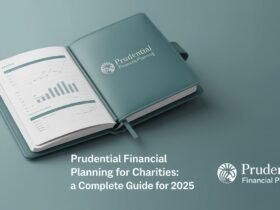Introduction to the White Oak Impact Fund
The White Oak Impact Fund represents a compelling shift in how institutional and private investors approach socially responsible investing. Built around the core tenets of Environmental, Social, and Governance (ESG) principles, this fund is strategically designed to generate measurable, positive impact while delivering financial returns through private credit investments. As the global focus intensifies on sustainability, transparency, and ethical capital deployment, the White Oak Impact Fund has emerged as a front-runner in 2025. Its targeted lending model not only supports growth-stage companies but also reinforces the values of inclusive and sustainable economic development. Investors are increasingly drawn to this fund due to its alignment with global ESG trends and its consistent performance in a complex financial environment.
Who is Behind the Fund?
The driving force behind the White Oak Impact Fund is White Oak Global Advisors, a well-established investment firm based in San Francisco. Founded in 2007, White Oak has earned a strong reputation in the private credit space, particularly for its innovative approach to lending and commitment to ethical investing. With over $10 billion in assets under management, the firm leverages its expertise to support small and medium-sized enterprises (SMEs) through customized financing solutions. The leadership team comprises seasoned professionals with deep experience in credit markets, risk assessment, and ESG integration. Their commitment to transparency and long-term value creation is reflected in every aspect of the White Oak Impact Fund’s structure and strategy.
What is the White Oak Impact Fund?
At its core, the White Oak Impact Fund is a private credit vehicle that emphasizes ESG alignment in every investment it makes. The fund is mission-driven, aiming to bridge capital gaps for underrepresented sectors while creating quantifiable social and environmental benefits. Unlike traditional credit funds that focus primarily on yield, the White Oak Impact Fund incorporates a dual mandate: generate stable returns and promote sustainable practices. It targets industries such as clean energy, sustainable agriculture, healthcare access, and affordable housing. Each investment is screened through a rigorous impact assessment framework to ensure that it aligns with predefined ESG goals. The fund’s ability to offer capital where traditional finance may hesitate sets it apart in today’s market.
2025 Fundraising Milestones
The White Oak Impact Fund has experienced significant fundraising success, especially in its most recent round. According to the SEC Form D/A filing in June 2025, the fund raised over $189.11 million from four investors, marking one of its largest rounds to date. This follows steady growth since its inception, with earlier rounds in 2020 and 2024 raising $45 million and $189 million, respectively. This strong upward trajectory reflects growing investor confidence in the fund’s strategy and its alignment with global sustainability goals. The consistent capital inflows also signal a broader trend where institutional capital is shifting toward purpose-driven investments that combine profit with purpose.
Core Investment Strategy
The White Oak Impact Fund’s strategy revolves around direct lending to ESG-aligned SMEs, which traditional banks often underserve. These businesses typically operate in niche markets but have outsized social and environmental benefits. The fund employs a bottom-up investment approach, evaluating each company on financial viability, impact potential, and ESG compliance. Key selection criteria include innovation, scalability, governance transparency, and measurable community impact. To mitigate risk, the fund diversifies across industries and geographies while maintaining strict credit standards. Its underwriting process is deeply integrated with ESG analysis, ensuring that each dollar deployed contributes meaningfully to its impact mission.
Measurable Impact & ESG Commitment
Impact measurement is a cornerstone of the White Oak Impact Fund. The fund doesn’t just claim ESG compliance—it demonstrates it with data. It uses a proprietary impact measurement system that includes both qualitative and quantitative metrics. These include carbon footprint reduction, job creation in underserved communities, gender diversity in leadership, and resource efficiency improvements. Quarterly impact reports are shared with investors, providing complete transparency on how the fund’s capital is being utilized. Real-world examples include financing a solar microgrid project in rural communities and supporting healthcare startups delivering affordable services in urban areas. This commitment to measurable outcomes positions the fund as a credible and effective impact investing vehicle.
Fund Structure & Global Reach
Structured as an SCSp (Special Limited Partnership) based in Luxembourg, the White Oak Impact Fund offers tax-efficient investment opportunities for global investors. The SCSp model provides flexibility in fund governance while complying with European regulatory standards. This structure makes the fund particularly attractive to institutional investors in Europe and Asia who seek ESG exposure without compromising on compliance. While headquartered in the U.S., the fund has a global mandate, with investments spread across North America, Latin America, Southeast Asia, and select African markets. This cross-border reach enables the fund to tap into high-impact opportunities in emerging and frontier economies.
Competitive Edge in the Impact Investing Market
In a rapidly evolving impact investing landscape, the White Oak Impact Fund stands out for its blend of disciplined credit underwriting and rigorous ESG integration. Unlike many ESG funds that passively invest in screened equities, White Oak takes an active role in shaping the outcomes of its investments through direct lending and strategic partnerships. This hands-on approach allows for greater control over impact metrics and portfolio outcomes. When compared with similar private credit ESG funds, White Oak distinguishes itself by focusing on middle-market companies that often lack access to institutional funding but demonstrate strong growth potential and social value. Its proven track record and transparent reporting also enhance its credibility among sophisticated investors.
Risks and Challenges
While the White Oak Impact Fund offers a compelling value proposition, it is not without risks. Direct lending to SMEs inherently involves credit risk, especially in volatile sectors or emerging markets. Additionally, ESG compliance can vary by region, posing challenges in maintaining consistent standards across the portfolio. There is also a growing concern around “greenwashing,” where funds may exaggerate their ESG credentials. White Oak addresses this through strict internal audits and third-party impact verification. Regulatory scrutiny is another challenge, particularly for cross-border structures like the SCSp, which must navigate complex legal environments. Despite these challenges, the fund’s robust risk management framework helps mitigate most operational and financial risks.
Future Outlook and Investor Opportunities
Looking ahead, the White Oak Impact Fund is well-positioned to capitalize on the increasing demand for sustainable finance. The global ESG investment market is projected to exceed $50 trillion by 2030, and funds like White Oak are poised to benefit from this momentum. The fund plans to expand its geographic footprint, enter new sectors such as climate tech and circular economy initiatives, and introduce AI-driven impact analytics for deeper insights. For investors seeking both financial performance and social relevance, this fund offers a compelling opportunity. Its alignment with global sustainability goals, coupled with a strong governance framework, makes it an ideal choice for impact-conscious investors in 2025 and beyond.
Also read more interesting topics at mgtimes.co.uk.






Leave a Reply